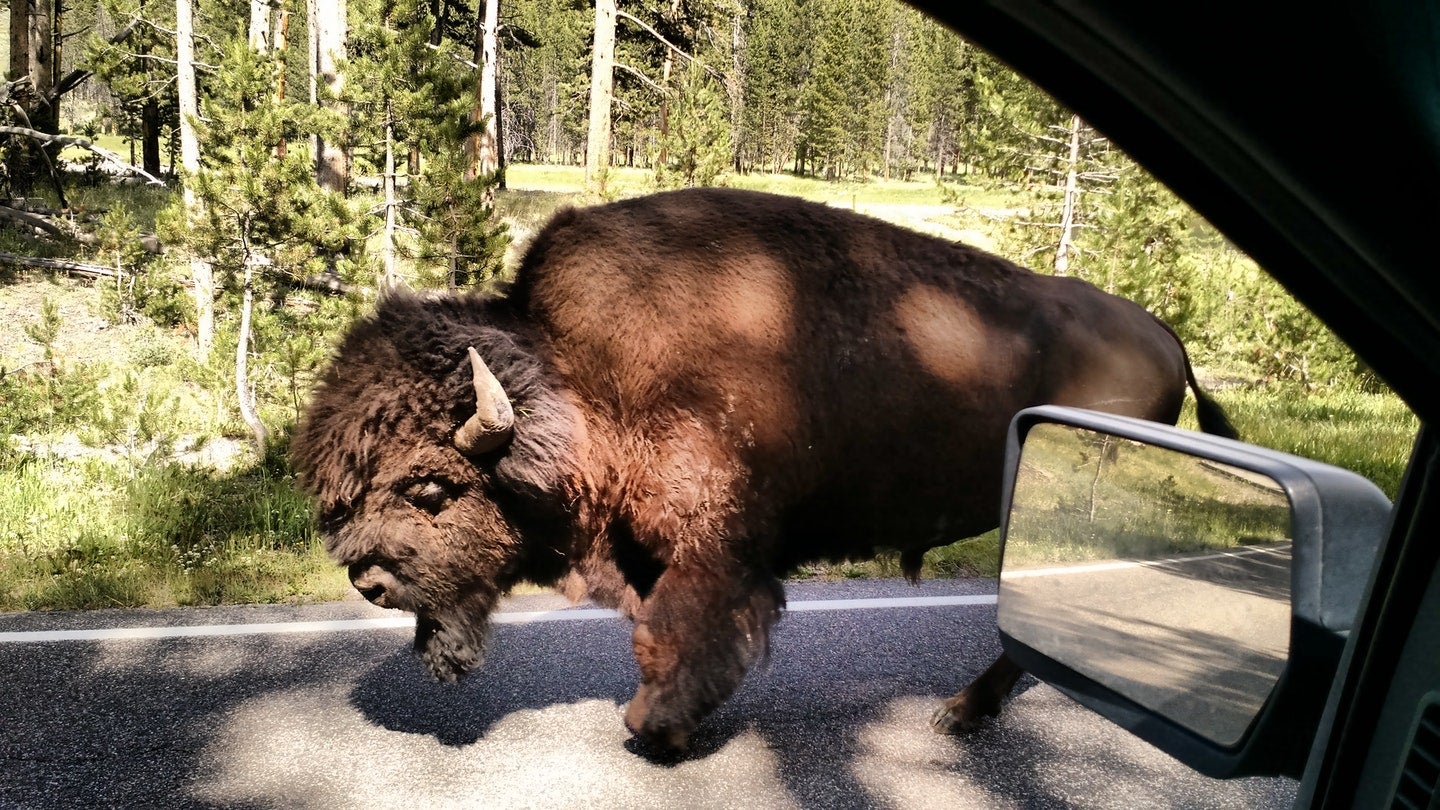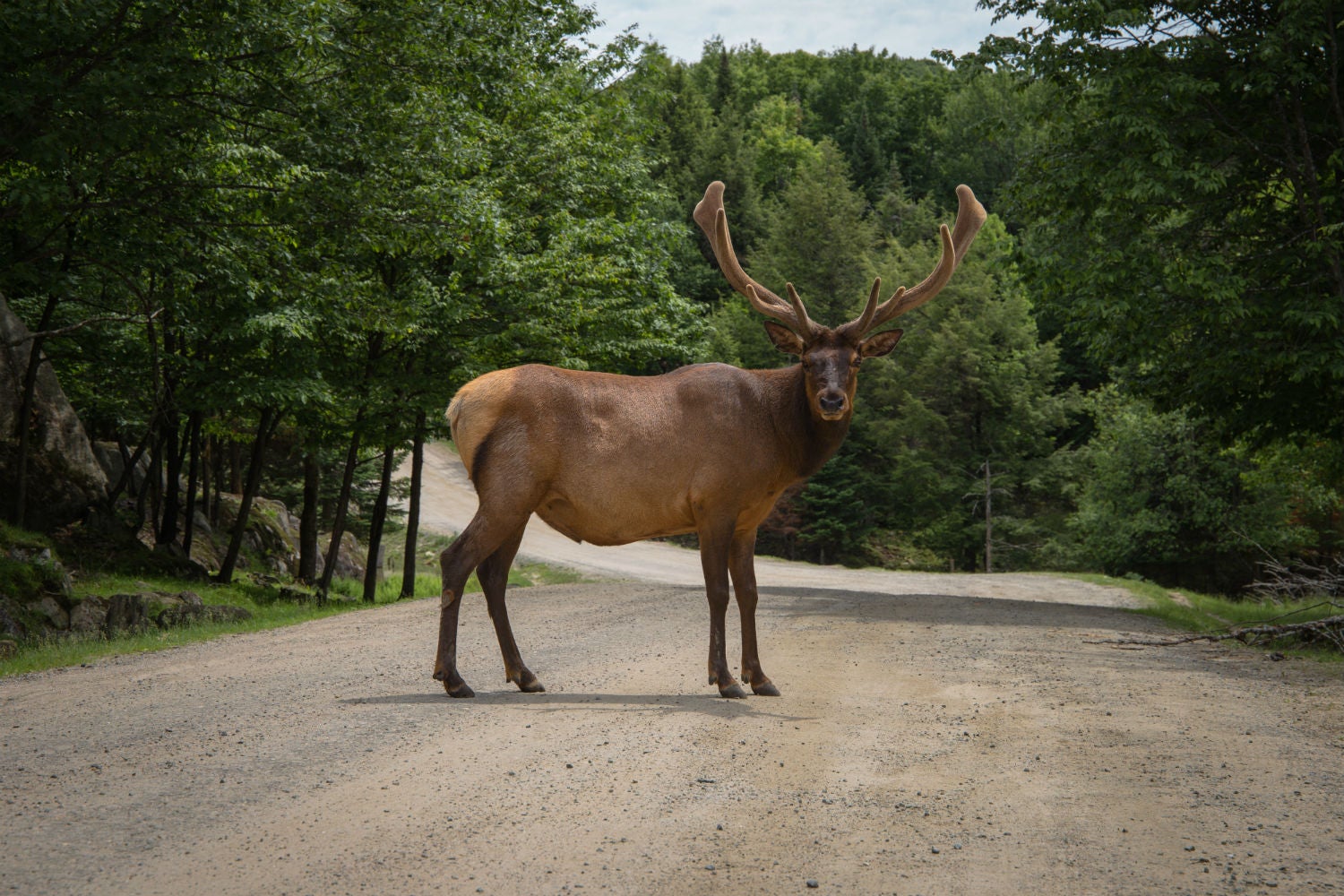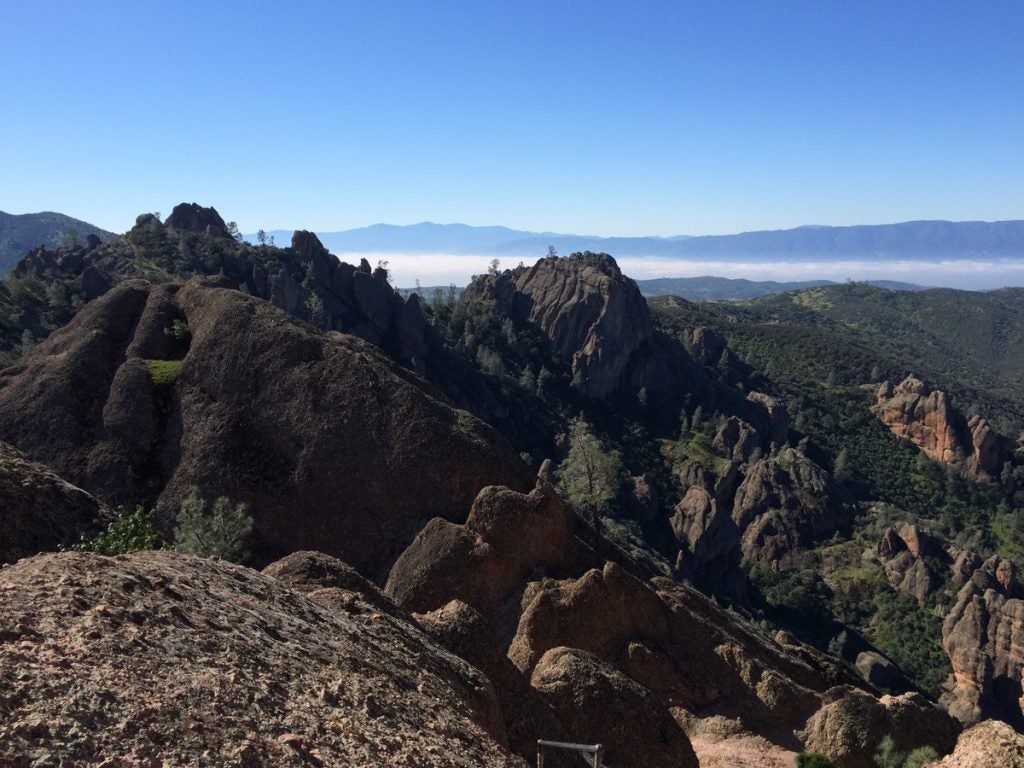From mountain peaks to deep blue bays, these camping destinations offer optimal wildlife viewing. Fascinating as they may be, remember to keep your distance when observing wild animals. This article is brought to you by our friends at Brunton, who make it easy to feel close to wildlife while keeping a safe distance with their industry leading monoculars.
Encountering a big animal in the wild can be thrilling — or frightening. Either way, it’s a powerful reminder that humans aren’t the only ones calling this planet home. When we’re in their territory, we’re reminded that other species once ran the show, and sometimes still do.
Observing big wildlife is a special experience that requires patience, respect, and knowledge about what to do in the event that they get a little too close. We highly recommend educating yourself on how to handle wild animals in the region you’re visiting, before you go to any of these places.
Here are a few resources to get you started:
- Staying Around Bears from NPS.gov
- Living with Moose from Alaska Department of Fish and Game
- Wolf Safety from Western Wildlife Outreach
Get Started Wildlife Viewing
The desire to view wildlife is great inspiration to slow down and pay attention to our surroundings. It’s important to move slowly, quietly, and with focus. Even if you don’t spot a big animal, this state of mind will heighten your experience of the smaller locals, like the birds and the bugs, which can be just as fascinating.
When observing big animals from a distance, you will likely want to invest in some sort of optic, like Brunton’s monocular. This will enable you to discern movement from across a valley or a distant peak.
National Park Service recommends 25 yards from most animals and 100 yards from predators. In certain places where grizzlies reign the terrain, carry bear spray and travel in groups.
The Best Campgrounds for Wildlife Viewing
Now, on to the good stuff. These campgrounds are surrounded by opportunities to spot big wildlife, like elk, bison, bears, bighorn sheep, alligators, and more.
1. Bridge Bay, Yellowstone National Park, WY

Image from The Dyrt user Stephanie H.
Yellowstone National Park is often referred to as the American Serengeti, and for good reason, the area is teeming with wildlife. The park boasts 61 different mammals which include elk, moose, bison, grizzly bears, and wolves. This place has the largest concentration of wildlife in the contiguous U.S.
Bridge Bay campground is a great place to stay within the park if you want to catch a glimpse of one of these wondrous beasts. The Dyrt Ranger Kari T. says, “We did see and hear some wildlife from our site, mostly birds, including a grouse that walked right through our site. Deer, elk, and bison are also around.”
Sounds pretty wild, right?
Camp Here2. Brooks Camp, Katmai National Park and Preserve, AK

Image from The Dyrt user SwitchbackKids.
We just mentioned that bears can be a main wildlife attraction at Yellowstone, but it’s nothing compared to the brown bear viewing in Katmai National Park and Preserve. From June to October each year, brown bears gather in Brooks River to feed on salmon–especially during the salmon spawn.
Even if you can’t make it to Katmai in the near future, you can observe the park’s wildlife through their online bearcams.
Brooks Camp is the only established campground at Katmai National Park and Preserve, and a campsite at Brooks can be difficult to reserve. Campsites open up for booking in January of the year before you plan to visit, and are usually full within five minutes, so you have to be prepared far in advanced.
The Dyrt Rangers, the SwitchbackKids, describe it as a one of a kind experience. “It’s not an exaggeration that the bears are everywhere. We could have stood on that viewing platform at Brooks Falls for days.”
Camp Here3. Estes Park Campground at Mary’s Lake, Estes Park, CO

Image from The Dyrt user Hannah O.
Rocky Mountain National Park is a great place to view wildlife, especially the big ones with all the assorted ungulates. Roughly 600-800 elk roam the park, and more than 300 bighorn sheep can be seen grazing up high in the Rockies. The best time to see elk is during the rut in the fall, when bulls bugle. This is their mating call which they also use to display their dominance to other elk.
Tucked right outside of Rocky Mountain National Park, Estes Park Campground at Mary’s Lake offers quick wilderness access for wildlife viewing, and all the benefits of being close to Estes Park proper. (If you don’t feel like cooking on your camp stove every night, you can make a quick trip into town.)
Even when you’re not in the park, according to one of our Rangers, Tommie J., said there is a lot of wildlife to be found nearby.
Camp Here4. Flamingo Campground, Everglades National Park, FL

Image from The Dyrt user Anjuli W.
Go tropical at Everglades National Park where you can forgo the furry animals and go straight to prehistoric-looking alligators. It’s a great area to go bird watching, especially in the winter season when the weather has cooled off from the hot Florida sun. You can also catch glimpses of manatees and dolphins across the bay.
Flamingo Campground is a popular place to stay during the dry season, but in the wet season it can be overrun with mosquitos. And that’s not really the kind of wildlife viewing we’re looking for.
“Upsides of camping at Flamingo include a free shower (in a national park?! What?!), pretty sites with palm trees, incredible wildlife (we saw osprey, a manatee, a crocodile, and so many birds near Flamingo), and the experience of being deep inside Everglades National Park,” write The Dyrt Campers, The Switchbackkids.
Camp Here


